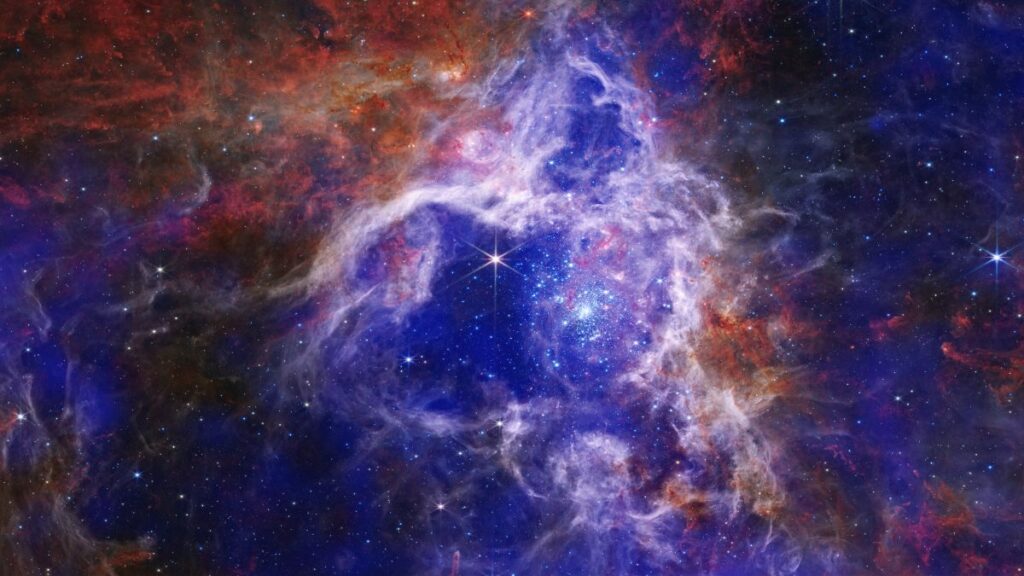
For the first time, astronomers have detected essential organic compounds frozen in ice beyond the Milky Way. This groundbreaking discovery, made in the Large Magellanic Cloud (LMC), revealed complex organic molecules including ethanol, acetaldehyde, and methyl formate. The findings suggest that the building blocks of life are not confined to our galaxy but are widely distributed throughout the universe.
Led by Marta Sewiło from NASA’s Goddard Space Flight Center and the University of Maryland, the research focused on a young star designated as ST6. This star is located approximately 160,000 light-years from Earth within a superbubble known as N158, close to the notable star-forming region called the Tarantula Nebula. The study highlights the rich chemistry occurring in environments significantly different from the Milky Way.
Significance of Complex Organic Molecules
Complex organic molecules (COMs), which contain at least six atoms including carbon, are critical to understanding the origins of life. Molecules such as ethanol (CH3CH2OH), methyl formate (HCOOCH3), and acetaldehyde (CH3CHO) are precursors to fundamental life components, including amino acids and sugars. The presence of these compounds in space provides insight into prebiotic chemistry and hints at where these molecules were formed long before the Earth existed.
The LMC presents a unique environment for studying COMs. It contains only about one-third to one-half of the heavy metal abundance found in the Milky Way, meaning there is less oxygen, carbon, and silicon available. Additionally, the LMC is characterized by intense star formation and less dust, allowing for clearer observations of the cosmic chemistry at play. Sewiło remarked that the discovery opens new avenues for exploring how complex chemistry evolves in the universe.
Methodology and Findings
Utilizing the James Webb Space Telescope (JWST), the research team analyzed mid-infrared light emitted by the icy materials surrounding ST6. By comparing the obtained spectra with a “COM fingerprint” database, they identified the presence of methanol, acetaldehyde, ethanol, methyl formate, and acetic acid (CH3COOH) in its frozen state. Until this study, acetic acid had only been detected in vapor form in space.
This finding adds substantial evidence to the theory that these molecules result from grain-surface chemistry in space. Ice forms on tiny dust grains, where chemical reactions occur, potentially leading to the creation of prebiotic compounds. The fact that similar processes can happen even under the LMC’s metal-poor conditions suggests a robustness in cosmic chemistry across different environments.
Moving forward, the research team plans to investigate additional young stars within the LMC to determine whether similar chemistry is evident throughout the dwarf galaxy or if ST6 represents an anomaly. As Sewiło notes, “We currently only have one source in the Large Magellanic Cloud and only four sources with detection of these complex organic molecules in ices in the Milky Way. We need larger samples from both to confirm our initial results.”
The implications of this research are profound, potentially reshaping our understanding of the universe’s ability to foster the essential ingredients for life. The study has been published in The Astrophysical Journal Letters, marking a significant milestone in astrobiology and interstellar chemistry.






